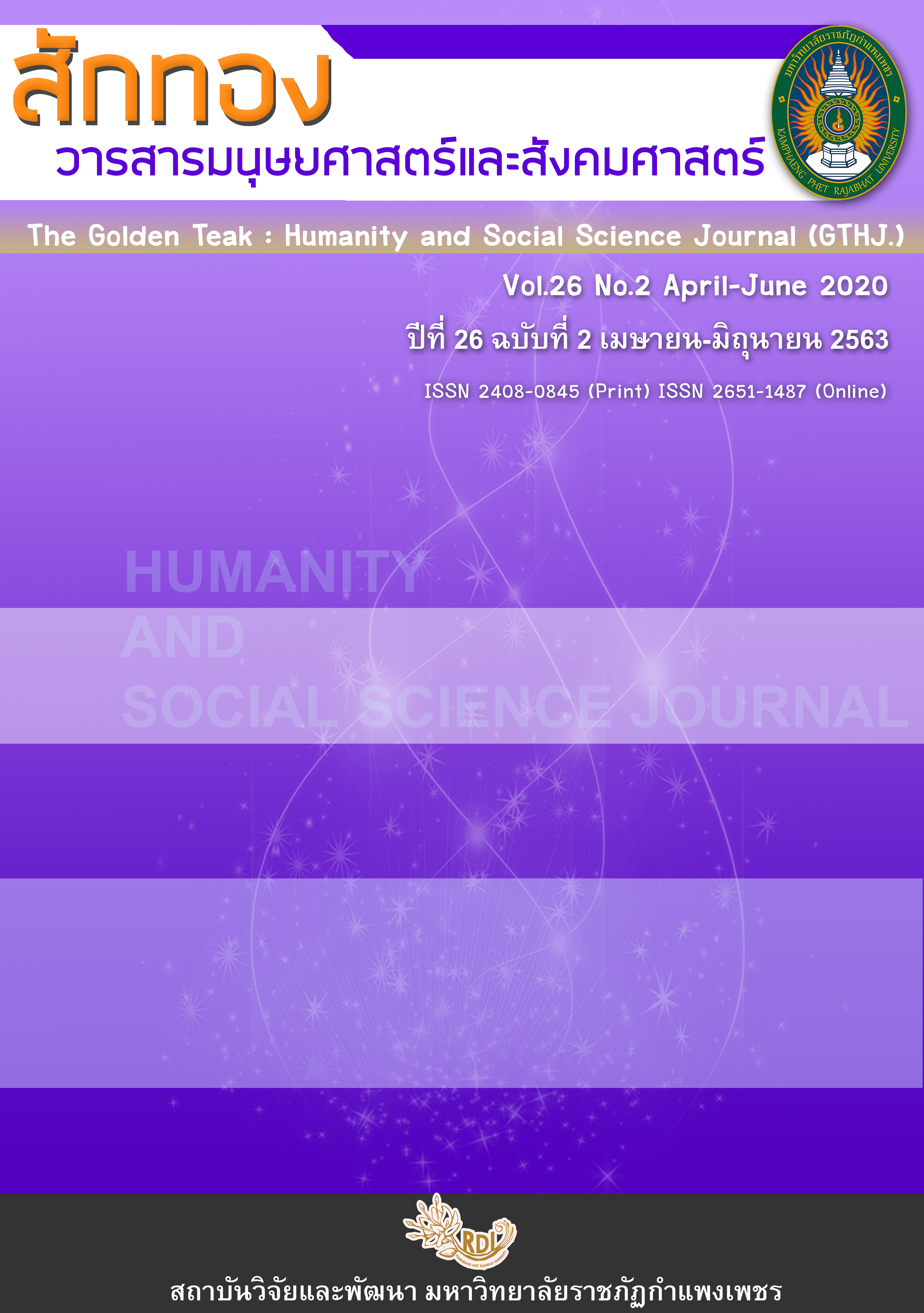Lifestyle and Line Communicative Innovation in Smartphone’s Usage Behavior of Undergraduate Students in Phitsanulok Province
Main Article Content
Abstract
The main objective of this research was investigate the demographic lifestyle behavior and relationship of line Communicative innovation in smart phone’s usage behavior of undergraduate students in Phitsanulok Province from 400 students. The data were analyzed by 1) Descriptive statistics and 2) Factor Analysis. 3) In the part of Inferential statistics to determine was Pearson’s Correlation coefficient. The result indicated that : The three types of lifestyle such as activities behaviors and opinions can be categorized in 6 factors it was 1) Computer Technology’s factors 2) Entertainment’s factor 3) The tasteful luxurious and comfort’s factor. 4) Health and beauty’s factor 5) Education Family and Living’s factor and 6. Public Social Activities Factors 5 sides of lifestyle excepted Public Social Activities Factors had related with the behavior in the reason using the Application: Line, the frequency to used Application: Line and average time per day to used Application: Line significantly.
Article Details
บทความที่ได้รับการตีพิมพ์เป็นลิขสิทธิ์ของวารสาร สักทอง : วารสารมนุษยศาสตร์และสังคมศาสตร์ สถาบันวิจัยและพัฒนา มหาวิทยาลับราชภัฏกำแพงเพชร
ข้อคิดเห็นใดๆ ที่ปรากฎในวารสารเป็นวรรณกรรมของผู้เขียนโดยเฉพาะ ซึ่งมหาวิทยาลัยราชภัฏกำแพงเพชรและบรรณาธิการไม่จำเป็นต้องเห็นด้วย
References
Chaichuy, W. (2017). Elderlies’ experience in using LINE application : a phenomenological Study, Silpakorn University. [Online]. Available : https://www.tcithaijo.org/index.php/Veridian-E-Journal/article/view/87705 [2018, February 19].
Dailynews Online. (2013) Thais play line over 15 million. [Online]. Available : http://www.dailynews.co.th/ technology/196675 [2015, October 28].
Deemool, W. & Chumkreaw, T. (2010). Social Network : New dimension of organization. Independent Study. Master of Science, Business Administration Faculty. Maejo University.
Kitthiwatthana, K. & Nithikasetsunthorn, P. (2004). Basic Concepts of Behavior : Communication Theory and Behavior Communication. Nonthaburi : Sukhothai
Thammathirat Printing; 2004.
Kotler, P. (2002). Marketing Management : Analysis, Planning, Implementation and Control. NJ : Prentice Hall.
Kreawthep, K. (1998). Mass Communication : Theory. Bangkok : Pabpim Printing.
Kullajitjeaowong, S. (2013). Line : Smart phone Creative Communication Pattern/Good and limit point Usage. Executive Journal : Bangkok University.
Panyana, S. (2014). Strategies for Integrating in Politics of Social Media Consumer Behavior in Mass Media and New Media. [Online]. Available : http://www.mediaartsdesign.org/project_detail.php?project_ id=480 [2015, October 28].
Prasitratthasin, S. (2007). Social Research Methodology. Bangkok : National Institute of Development Administration.
Reimer, B. (1995). Youth and Modern Lifestyle in Youth Culture in Youth Modernity. London : Sage Publication.
Srisutthipan, O. (2002). Opinion, media exposure and lifestyle of internet users in Bangkok. Master of Communication Arts, Faculty of Journalist & Communication Thammasat University.
Thammasat, Business School, Business Research Center. (1999). Bangkok lifestyle pattern. Bangkok : Thammasat University.
Wilakchai, N. (2009). Relations between Stats and Research. Golden Teak : Humanity and Social Science Journal, 15(1), 1-13.


